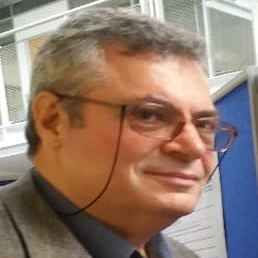Sustainable Approaches in Water Treatment Practices, Presenting Minimum Environmental Impact
A special issue of Water (ISSN 2073-4441). This special issue belongs to the section "Wastewater Treatment and Reuse".
Deadline for manuscript submissions: 20 September 2024 | Viewed by 20321
We are also glad to welcome selected papers on related topics from “The International Conference on Raw Materials and Circular Economy” (RawMat2021, https://www.rawmat2021.gr/congress/) .
Special Issue Editors
Interests: separation sciences and related technologies; wastewater/water treatment; membrane fouling; aerobic/anaerobic digestion; recovery/removal of metals from liquid waste streams; physicochemical methods for the treatment of contaminated water sources or of wastewaters, biological/aerobic or anaerobic treatment methods; combinations of biological and physicochemical methods; treatment/recycling issues of toxic industrial solid wastes; hydrometallurgical; physico-chemical (solidification/stabilization); thermal (vitrification), or appropriate combinations of treatment processes; carbon capture utilization and storage (CCUS)
Special Issues, Collections and Topics in MDPI journals
Interests: water analysis; nanoparticle synthesis; X-ray analysis; microscopy analysis
Special Issues, Collections and Topics in MDPI journals
Special Issue Information
Dear Colleagues,
This Special Issue focuses on the promotion of sustainable technologies in the field of water treatment which achieve economic viability and competence with minimum environmental impact. Since water scarcity and contamination are emerging issues in many regions worldwide, securing new water resources through reuse or remediation strategies has turn into a mandatory task of high importance. The need to develop novel approaches gets more intense as international and local authorities adopt strict legislations concerning not only the pollutant levels in water but also the overall outcome in the environment of the used recovery process. For instance, a well-defined and very efficient water treatment method may become invalid under the prism of the upcoming demands for integrated sustainability and documented life cycle analysis. Therefore, the cost of the process, which was traditionally defined by the value of the used materials, chemicals, facilities, and energy, may be determined in the future by the ability to fulfill an environmental footprint target which is set each time. From this point of view, research on the design of modern processes or the proper modification of existing ones will serve as a building substrate towards a new era of symbiosis between human activities and the environment. In this frame, this Special issue will give particular attention to studies on treatment methods related to water management during mineral processing and to groundwater polluted by mining activities.
Prof. Dr. Anastasios Zouboulis
Dr. Konstantinos Simeonidis
Dr. Evgenios Kokkinos
Guest Editors
Manuscript Submission Information
Manuscripts should be submitted online at www.mdpi.com by registering and logging in to this website. Once you are registered, click here to go to the submission form. Manuscripts can be submitted until the deadline. All submissions that pass pre-check are peer-reviewed. Accepted papers will be published continuously in the journal (as soon as accepted) and will be listed together on the special issue website. Research articles, review articles as well as short communications are invited. For planned papers, a title and short abstract (about 100 words) can be sent to the Editorial Office for announcement on this website.
Submitted manuscripts should not have been published previously, nor be under consideration for publication elsewhere (except conference proceedings papers). All manuscripts are thoroughly refereed through a single-blind peer-review process. A guide for authors and other relevant information for submission of manuscripts is available on the Instructions for Authors page. Water is an international peer-reviewed open access semimonthly journal published by MDPI.
Please visit the Instructions for Authors page before submitting a manuscript. The Article Processing Charge (APC) for publication in this open access journal is 2600 CHF (Swiss Francs). Submitted papers should be well formatted and use good English. Authors may use MDPI's English editing service prior to publication or during author revisions.
Keywords
- water treatment
- water quality parameters
- pollutants removal
- sustainable technologies
- best practices
- drinking water
- wastewater
- environmental impact
- life cycle analysis







